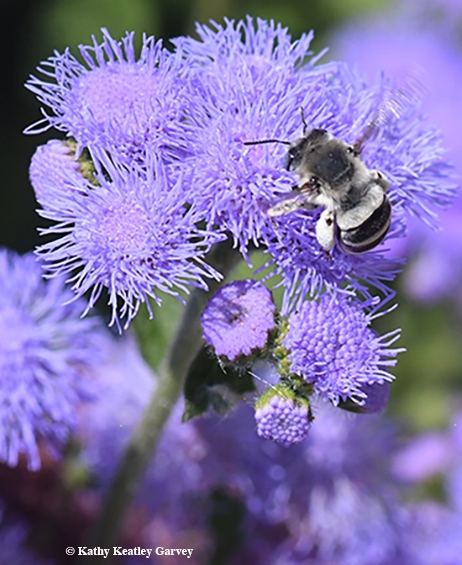
And sometimes it's too good to be true.
We were visiting the Sunset Gardens at the Sonoma (Calif.) Cornerstone on Sunday--marveling at the brilliant blue floss flowers, Ageratum houstonianum 'Blue Horizon'--when a bee with the familiar black and white abdominal stripes streaked by.
It was a digger bee, Anthophora urbana, a speedy bee we've bee admiring for years. We watched this one, a female, hover in front of a blossom for a couple of seconds--just enough time to grab four photos.
This is a native bee, smaller than a honey bee, that nests in the ground and transports pollen on its hind legs. It emerges early in the year, from early spring to summer, depending on the species, according to the authors of California Bees and Blooms: A Guide for Gardeners and Naturalists.
Its floral hosts include catmint (Nepeta), sage (Salvia chamaedryoides and Salvia mellfera), lavender (Lavandula spp.), phacelia (Phacelia tanacetifolia) and toadflax (Linaria purpurea).
This one was nectaring on a member of the aster family. Ageratum houstonianum, an annual.
According to the Missouri Botanical garden, the plant's genus name "presumably comes from the Greek a meaning not and geras meaning old age because the flowers hold their color for a long time." The species name honors Scottish surgeon and botanist William Houston (1695-1733) who collected plants in Mexico, West Indies and South America.
Want to know more about native bees? The book, California Bees and Blooms: A Guide for Gardeners and Naturalists, is a must-have. Published by Heyday Press, it's the work of Gordon Frankie, Robbin Thorp, Rollin Coville, and Barbara Ertter, all professionals affiliated with the University of California--(Frankie, Coville and Ertter, UC Berkeley, and Thorp, UC Davis who received his doctorate from UC Berkeley).
They also published a pocket guide, Common Native Bees in Gardens of California, available for purchase on the UC ANR website.
Are these Anthophora bees as fast as everyone says they are?
Yes, they are.
The authors wrote: "These bees fly so fast, you often only see a grey streak zoom by."
Make that a black-and-white streak that's moving so fast it appears grey.
(Editor's note: Photographer stopped the action with a Nikon D500 mounted with a 105mm macro lens: shutter speed, 1/3200 of second, f-stop 10; and ISO, 1250.)
Attached Images:
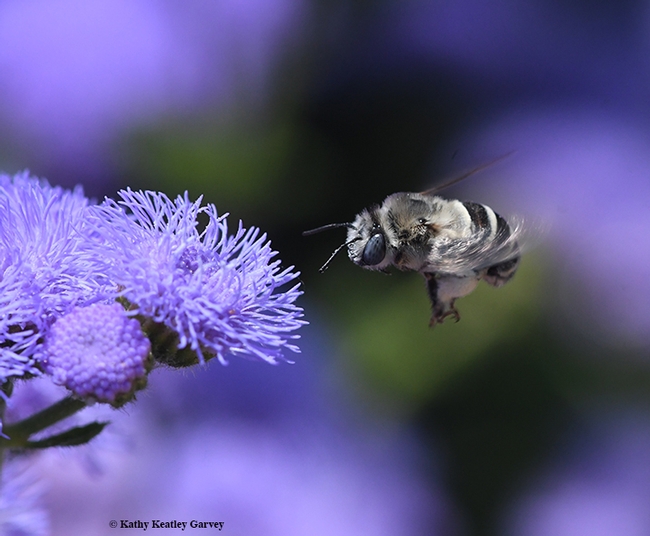
First of four images: A digger bee, Anthophora urbana, heads for a Ageratum houstonianum 'Blue Horizon' at the Sunset Gardens, Sonoma Cornerstone. (Photo by Kathy Keatley Garvey)
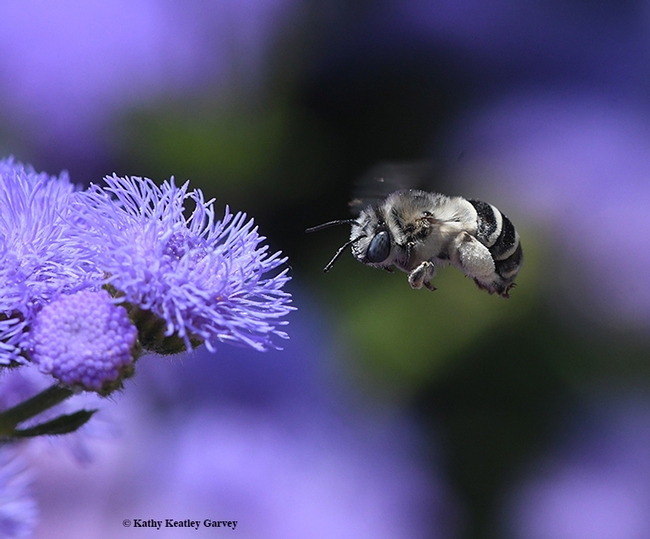
Second of four images: A digger bee, Anthophora urbana, heads for a Ageratum houstonianum 'Blue Horizon' at the Sunset Gardens, Sonoma Cornerstone. (Photo by Kathy Keatley Garvey)
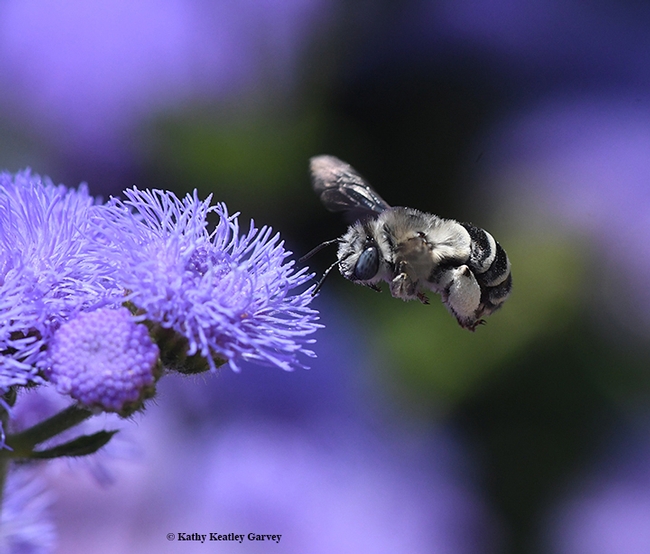
Third of four images: A digger bee, Anthophora urbana, heads for a Ageratum houstonianum 'Blue Horizon' at the Sunset Gardens, Sonoma Cornerstone. (Photo by Kathy Keatley Garvey)
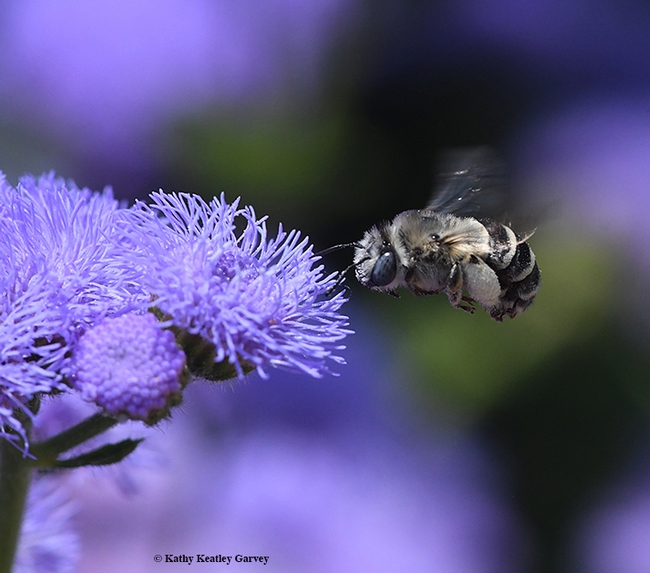
Fourth of four images: A digger bee, Anthophora urbana, heads for a Ageratum houstonianum 'Blue Horizon' at the Sunset Gardens, Sonoma Cornerstone. (Photo by Kathy Keatley Garvey)